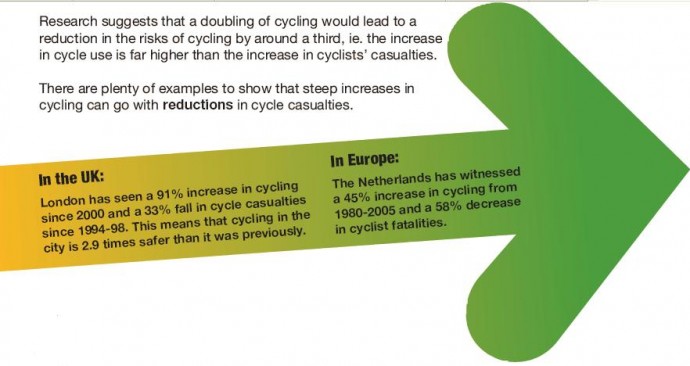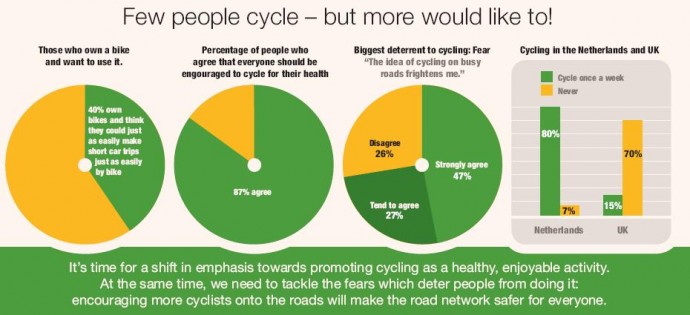- News
- Reviews
- Bikes
- Accessories
- Accessories - misc
- Computer mounts
- Bags
- Bar ends
- Bike bags & cases
- Bottle cages
- Bottles
- Cameras
- Car racks
- Child seats
- Computers
- Glasses
- GPS units
- Helmets
- Lights - front
- Lights - rear
- Lights - sets
- Locks
- Mirrors
- Mudguards
- Racks
- Pumps & CO2 inflators
- Puncture kits
- Reflectives
- Smart watches
- Stands and racks
- Trailers
- Clothing
- Components
- Bar tape & grips
- Bottom brackets
- Brake & gear cables
- Brake & STI levers
- Brake pads & spares
- Brakes
- Cassettes & freewheels
- Chains
- Chainsets & chainrings
- Derailleurs - front
- Derailleurs - rear
- Forks
- Gear levers & shifters
- Groupsets
- Handlebars & extensions
- Headsets
- Hubs
- Inner tubes
- Pedals
- Quick releases & skewers
- Saddles
- Seatposts
- Stems
- Wheels
- Tyres
- Health, fitness and nutrition
- Tools and workshop
- Miscellaneous
- Buyers Guides
- Features
- Forum
- Recommends
- Podcast
news
 ctc logo 09.jpg
ctc logo 09.jpgCTC launches ’Safety in Numbers’ research in Parliament
Cyclist, broadcaster and CTC president Jon Snow launches the cycling organisation's Safety in Numbers research in Parliament today.
The launch is the CTC’s chance to put forward hard facts to MPs and interested parties proving that more cycling means safer cycling.
The cycling organisation aims to win support for amendments to the recently released draft Road Safety Strategy, building on a commitment to make cycling safer for cyclists, by pledging to increase the amount of cycling over the ten year period covered by the strategy.
The CTC research shows York, Cambridgeshire and Hull are the places with the highest cycle use and are also the safest places in the country to cycle. Meanwhile in London, which regularly hits the headlines thanks to cycle-friendly initiatives such as the London cycle hire scheme, bike use has increased 91 per cent since 2000 and there has been a 33 per cent reduction in the number of cyclist casualties over the same period. All this is firm evidence, says the CTC, that the more cyclists there are, the safer cycling becomes.
Jon Snow says: “My own experiences as a regular cyclist tell me that London’s streets have started getting a lot safer, thanks to the growth in cycling over the past decade. We all know that more cycling is good, not just for our own health but also for our communities and the environment. I hope decision-makers throughout the country will now heed CTC’s message that more cycling will improve road safety too.”
Backed up by its research, the CTC is pushing for the new Road Safety Strategy to include a pledge to double cycle use over the next ten years. This, it believes, is the best way to achieve the pledge, already contained within the draft document, to halve the risks over the same time period.
The CTC is urging MPs, therefore, to sign a parliamentary motion backing its call for the Road Safety Strategy to aim for more as well as safer cycling.
Roger Geffen, CTC’s Campaigns and Policy Manager, said: “There is good evidence that cycling gets safer the more cyclists there are. Yet despite this, local councils are often reluctant to encourage cycling for fear that this would lead to more casualties – and some even think the best way to meet their safety targets is to scare people off cycling altogether!
"I’m delighted the Government has taken on board CTC’s suggestion that new targets for cycle safety should be measured in terms of the risk per mile cycled, not simple casualty numbers. We hope this will encourage local authorities to aim for ‘more’ as well as ‘safer’ cycling, in order to maximise cycling’s health and other benefits.”


"...the beeswax-based covering magically shuns off whatever might be lurking in the corners. Even after multiple rides, when the bars rattled about...
I've always wondered - why does the one-armed person in the cloak have their hand in the one-armed person with the cane?
t-boned
I didn't know the blue RA saddle was a holy grail - I had a 1986 RA bought new in 1987 with a blue saddle that lasted me very well until 2002 when...
Solution: Put these up everywhere. Source: https://www.gov.uk/guidance/the-highway-code/traffic-signs
Glad you like it - this week was the first proper commuting week since I got it, 250kms nice and warm but not boiled, indeed - and when the...
As what you have said is demonstrably untrue, given that the event is organised and has been for the last four years by a professional events...
Accessibility issue. Of course by necessity / co- evolution the Dutch generally provide a fairly "one size fits standard bikes" parking solution -...
I'm there now too, if anyone wants a follow/wants to follow me. @cyclingtheseaso
I totally agree. I used to commute through Long Ashton and only started getting agro from motorists when the pavement was made to be a shared path....